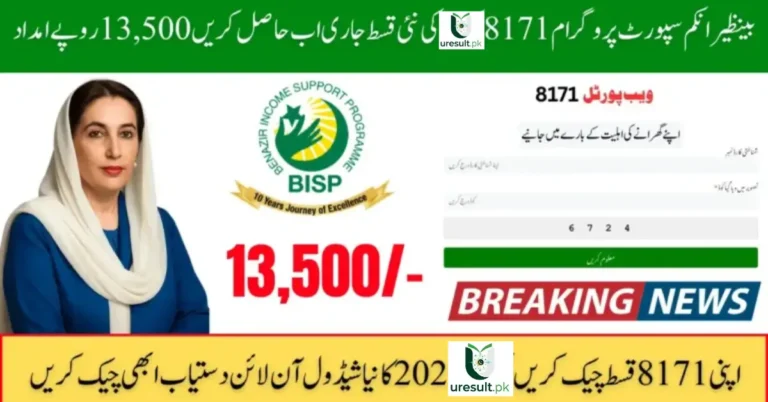The BISP Poverty Score 2025 is a critical factor that determines whether low-income families in Pakistan qualify for financial assistance under the Benazir Income Support Program. For many households, this updated scoring system directly impacts their chances of receiving payments, making it essential to understand how the score is calculated and what changes have been introduced this year.
 Also read
Also read
What Exactly is the BISP Poverty Score 2025?
The BISP Poverty Score 2025 is a comprehensive metric that combines multiple socio-economic indicators into one numerical value. This score reflects the level of poverty a household experiences, with a lower score indicating higher need. Factors like monthly income, household assets, living conditions, and family size are all taken into account.
This scoring system helps BISP decide who should receive financial support by objectively measuring poverty levels across the country. Since it was updated in 2025, the poverty score has become more stringent, aiming to ensure resources are allocated to the most vulnerable families.
 Also read
Also read
Significant Changes to Eligibility in 2025
With the revision of the Poverty Score 2025, the eligibility threshold has been tightened. This means households that previously qualified for payments might now fall outside the eligibility criteria if their score exceeds the new cutoff. The goal is to optimize resource distribution but as a result, some families that were once beneficiaries may no longer receive payments.
This adjustment has caused concern among many applicants, especially those whose economic situations are borderline or have changed slightly since their last assessment.
 Also read
Also read
How the BISP Poverty Score is Calculated
The calculation of the BISP Poverty Score involves assessing a variety of household characteristics:
- Income Levels: Higher household income typically results in a higher poverty score, reducing the chances of qualifying for aid.
- Ownership of Assets: Land, vehicles, livestock, and durable goods contribute to increasing the score.
- Housing Conditions: The type, ownership, and quality of housing are evaluated.
- Family Size and Demographics: Larger families or those with more dependents might have their scores adjusted accordingly.
- Education and Employment: Educational attainment and employment status of family members are also factored into the score.
All these elements are combined through a specific formula to create a final score used to determine eligibility.
 Also read
Also read
Checking Your BISP Poverty Score
It is vital for beneficiaries to regularly check their BISP Poverty Score status. You can do this through multiple channels:
- SMS Service: By sending your CNIC number to the designated BISP number, you can receive your current score and eligibility status.
- Official Website: The BISP portal allows users to input their information and view their score and payment status.
- Local BISP Offices: Visiting nearby offices can provide in-person assistance and updates.
Regularly monitoring your score helps you stay aware of any changes and prepare accordingly.
What Does a High BISP Poverty Score Mean?
If your score rises above the eligibility threshold, your payments may be paused or stopped altogether. This often happens if your household’s financial situation improves or if new data on assets and income comes to light.
A high poverty score means that, according to BISP’s updated criteria, your family is considered less in need of support. While this may be discouraging, it encourages beneficiaries to explore other social support options or reapply if circumstances change.
Alternative Assistance Beyond BISP
For those who no longer qualify due to their BISP Poverty Score, several other programs can provide support:
- Ehsaas Program: A broader government initiative providing cash transfers and welfare support.
- Subsidized Food and Health Services: Various government and provincial schemes offer assistance in these areas.
- Community and NGO Support: Local organizations often assist vulnerable families with essential resources.
Exploring these alternatives is key to maintaining financial stability when BISP payments are unavailable.
 Also read
Also read
Summary Table
| Aspect | Explanation |
|---|---|
| Eligibility Threshold | Lower cutoff in 2025 means fewer beneficiaries qualify |
| Income and Asset Impact | Higher income/assets increase score, reducing eligibility |
| Household Conditions | Better living standards raise the score |
| Family Size Influence | Larger families may have adjusted scoring |
| Monitoring Options | A lower cutoff in 2025 means fewer beneficiaries qualify |
Conclusion
The BISP Poverty Score 2025 plays a pivotal role in determining who receives financial support from the Benazir Income Support Program. Its revision this year has made eligibility more stringent, affecting many families’ chances of payment. Staying informed about how your poverty score is calculated and monitoring your status regularly is essential for anyone involved with BISP.
While changes in eligibility can be challenging, alternative support systems are available to help bridge the gap. Knowledge and proactive engagement remain the most effective ways to navigate these evolving criteria and ensure your family’s needs are met.
 Also read
Also read








